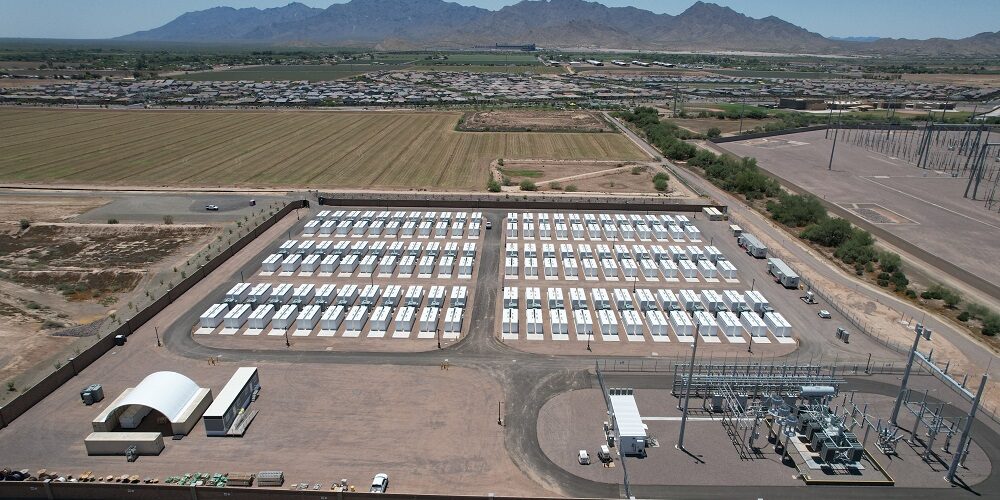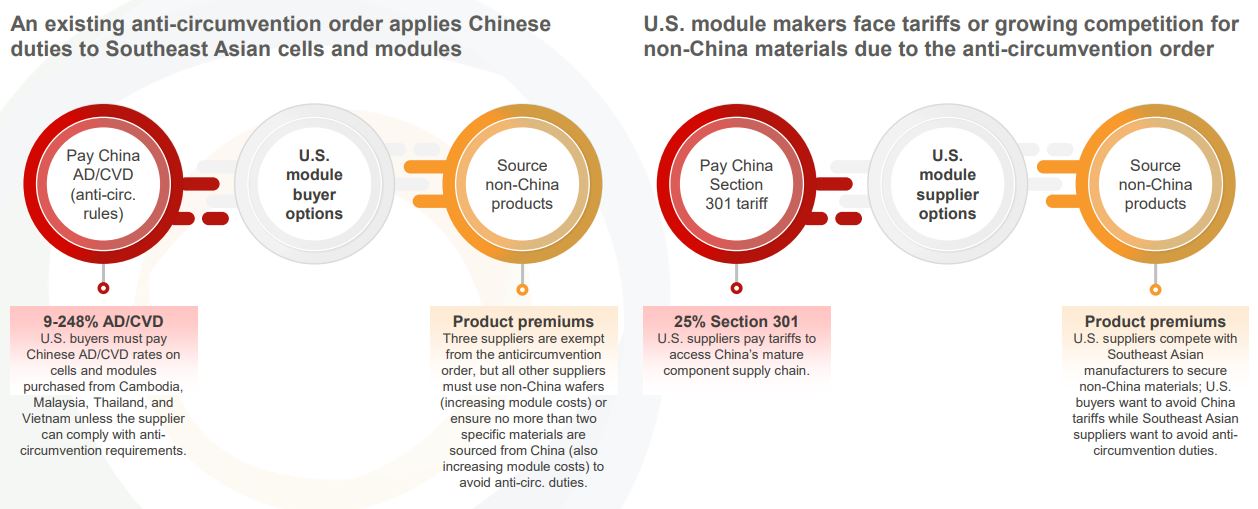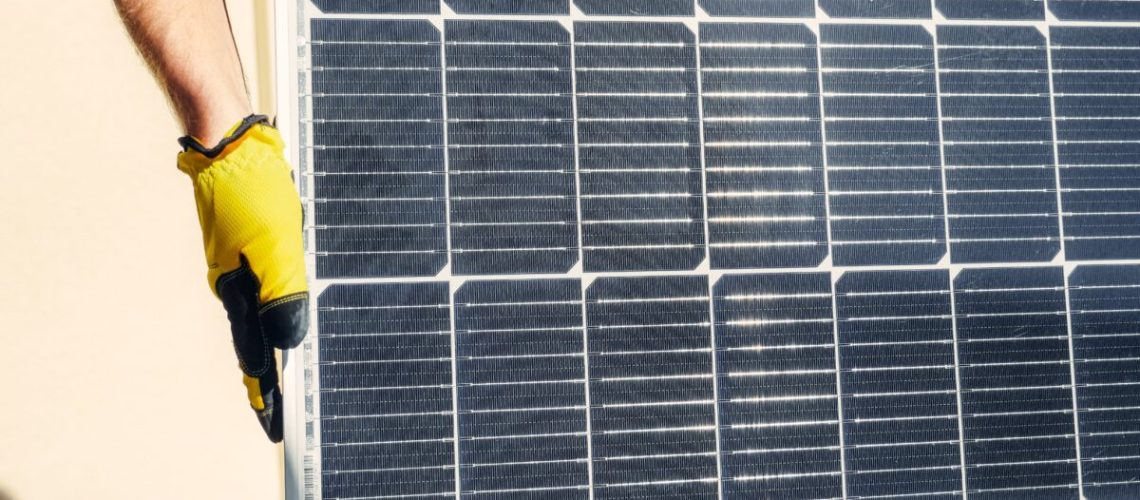A report from Clean Energy Associates (CEA) and the American Council on Renewable Energy shows how antidumping and countervailing duty (AD/CVD) tariffs create cost issues not just for imported solar panels, but for U.S.-made solar panels as well.
The U.S. has ended its two-year pause of solar antidumping and countervailing duty (AD/CVD) tariffs. The tariffs apply to solar components shipped from Vietnam, Malaysia, Thailand, and Cambodia that are found to be harboring tariff-dodging goods originating from China.
The four Southeast Asian nations are responsible for almost 80% of the U.S. supply of solar components. AD/CVD tariffs historically have ranged from 50% to 250% of the cost of shipped goods. This tariff risk creates a great deal of uncertainty for buyers and suppliers. Clean Energy Associates (CEA) and the American Council on Renewable Energy (ACORE) released a report assessing these risks.
The U.S. Energy Information Administration said the threat of AD/CVD tariffs in 2022 had prompted delays or the cancellation of around 20% of utility-scale solar generation capacity.
Now, following petition from U.S. manufacturers claiming dumped products are harming their business, the U.S. International Trade Commission has decided to take up a new round of AD/CVD investigations on component suppliers from the four Southeast Asian nations.
The Department of Commerce of is expected to issue its CVD preliminary determination on September 23 and its AD preliminary determination on November 20, said law firm Foley and Lardner. For either determination, Commerce will establish the tariff rate based upon the records of subsidization and dumping before it. A final determination is expected to be made on April 4, 2025 for the Department of Commerce and May 19, 2025 for the International Trade Commission.
ACORE president and chief executive officer Ray Long said a finding of AD/CVD violation “could unintentionally cede U.S. leadership in the solar industry to other countries.”
Domestic manufacturers of solar components have petitioned in support of the tariffs, but CEA warns that enforcement could negatively impact their businesses, too. This is because there is a significant gap in the U.S. solar supply chain. While huge amounts of module assembly facilities have come online, the cells that are manufactured and integrated into a solar module are still heavily reliant on imports, with very little production capacity domestically.
CEA said module manufacturing capacity in the U.S. may grow from 31 GW in 2024 to about 60 GW by 2026. Cell capacity may take more time, it said, growing from about 1 GW in 2024 to 11 GW in 2027. The firm expects most cell factories to finish expansion by 2027 as the Inflation Reduction Act 45X manufacturing incentives run out shortly thereafter in 2030.
CEA modeled that solar AD/CVD tariffs would raise domestic module costs by 10 cents per watt and imported module costs by 15 cents per watt, significantly affecting project economics. For reference, a buyer told OPIS that current U.S. Delivered Duty Paid (DDP) TOPCon solar module prices have risen to the low-to-mid $0.30/W range. This pricing includes the 201 bifacial tariffs but excludes the new antidumping/countervailing duties.
“These higher prices implemented on top of other headwinds, including domestic factors and trade restrictions already in place and impacting the industry’s trajectory, could seriously hinder America’s progress on solar deployment,” said ACORE.
Popular content

ACORE noted that the U.S. solar industry is in good health. Private businesses have announced at least 105,454 new jobs and over $123 billion in capital investment in clean energy broadly since the passage of the IRA, and solar is expected to represent about 59% of all grid capacity additions through 2028. but to meet goals of a 50-52% reduction in greenhouse gas emissions by 2030, the U.S. solar industry must increase from 177 GW of installed capacity to over 500 GW. Worsened project economics could threaten hitting this fast-approaching target.
The report argues that the U.S. needs more time to build solar cell capacity to meet demand. It also recognizes that the U.S. may be reliant on cell imports for some time.
It is more difficult to establish a solar cell factory for numerous reasons, said CEA. Cell capacity can take twice the construction, training, and ramp time of module capacity. Uncertain domestic content rules make the value of U.S. cells highly variable until the final statutes are published. And cell capital expenditure costs can be two to three times the cost of a module factory, making it difficult for new suppliers to raise funding.
CEA forecast that the U.S. will need to import up to 41 GW worth of cells and/or modules to meet projected U.S. installations until Section 201 tariffs are phased-out in February 2026.
Enforcement of AD/CVD may threaten the supply of cells in the meantime. The report said duties could create a situation where cell buyers and suppliers are unwilling to risk duty, and cell transactions stop.

The report warns that an AD/CVD finding may in turn put U.S. manufacturing jobs at risk. Duties could leave nearly 34 GW of U.S. solar module capacity without competitively priced cell inputs, jeopardizing almost 9,000 U.S. factory jobs.



